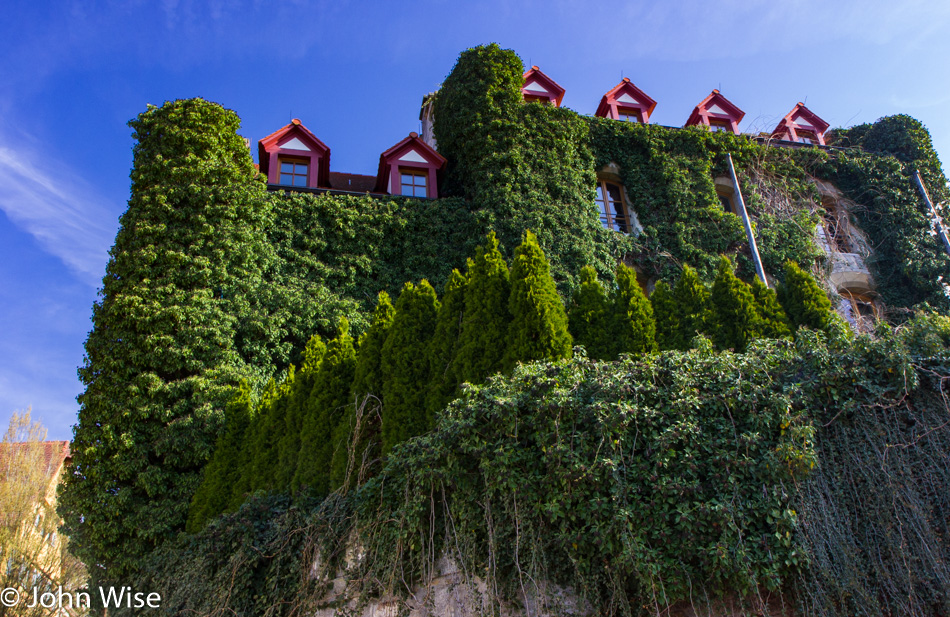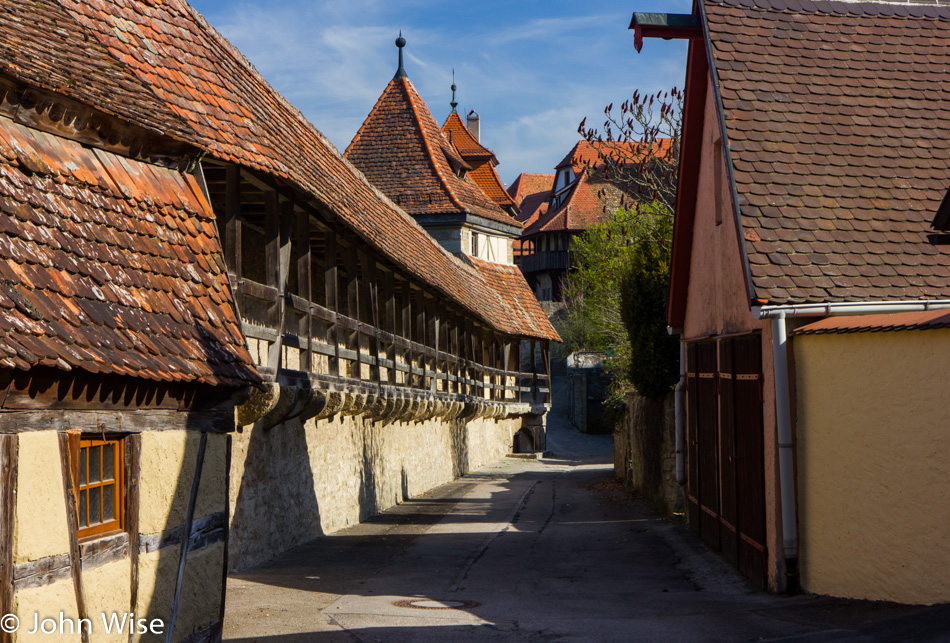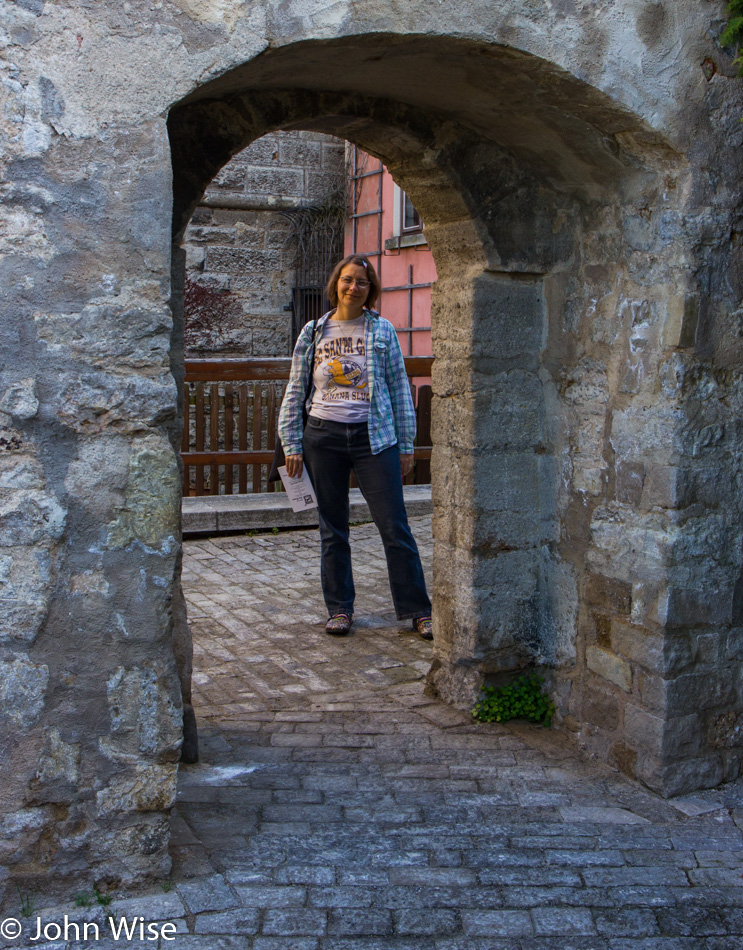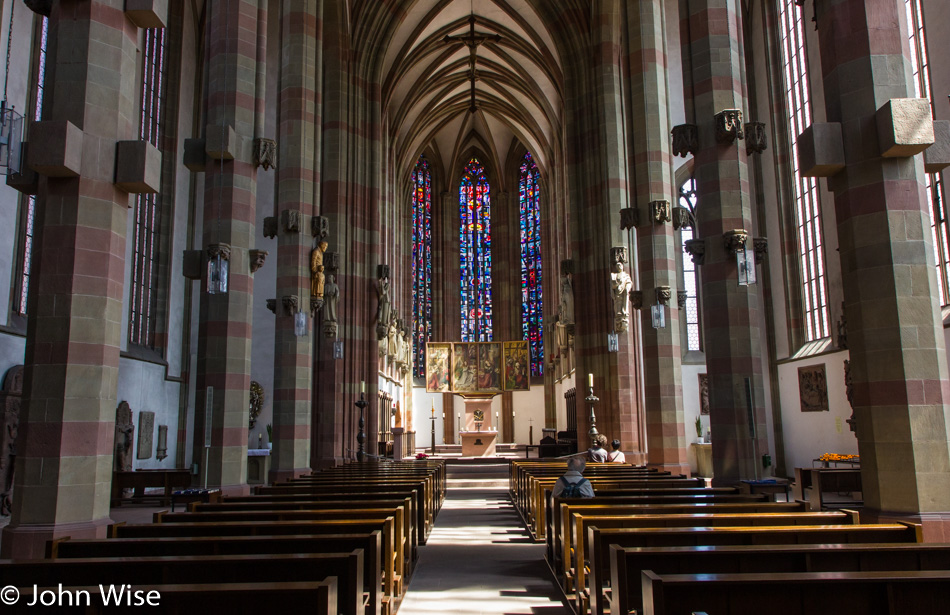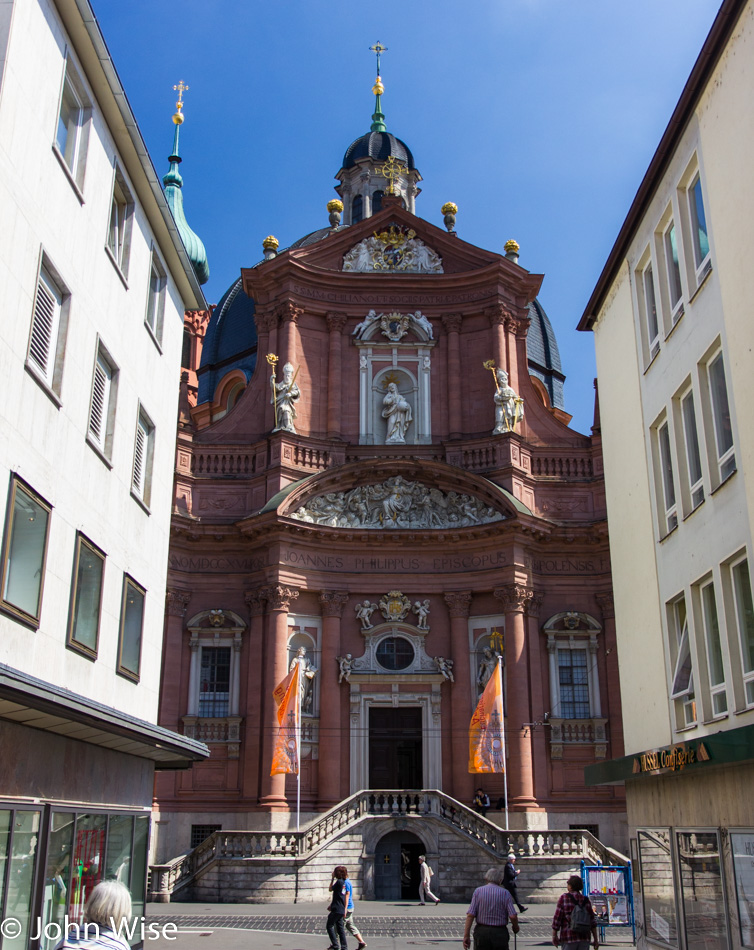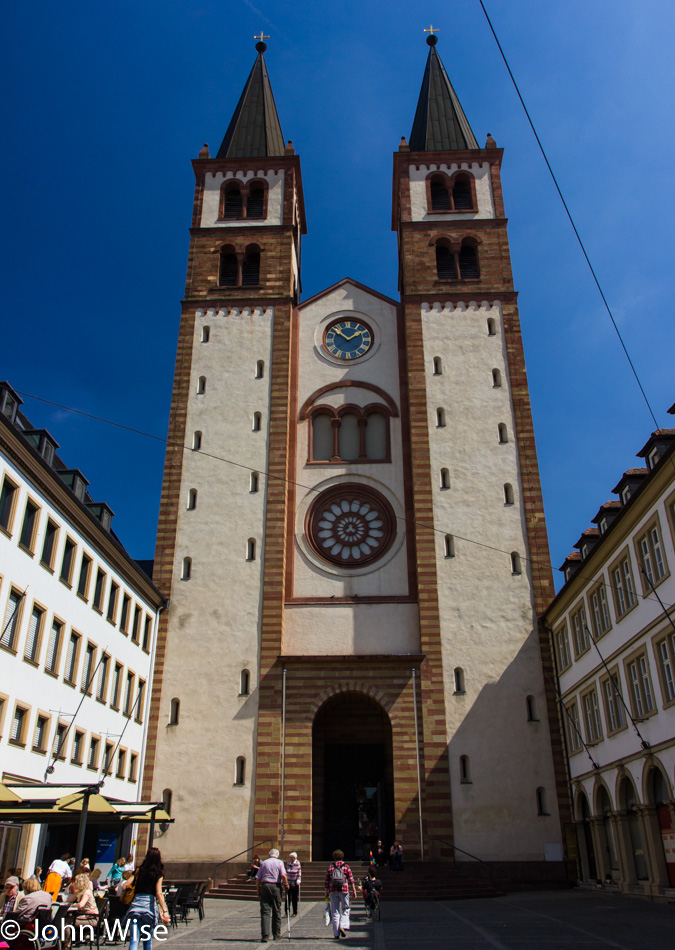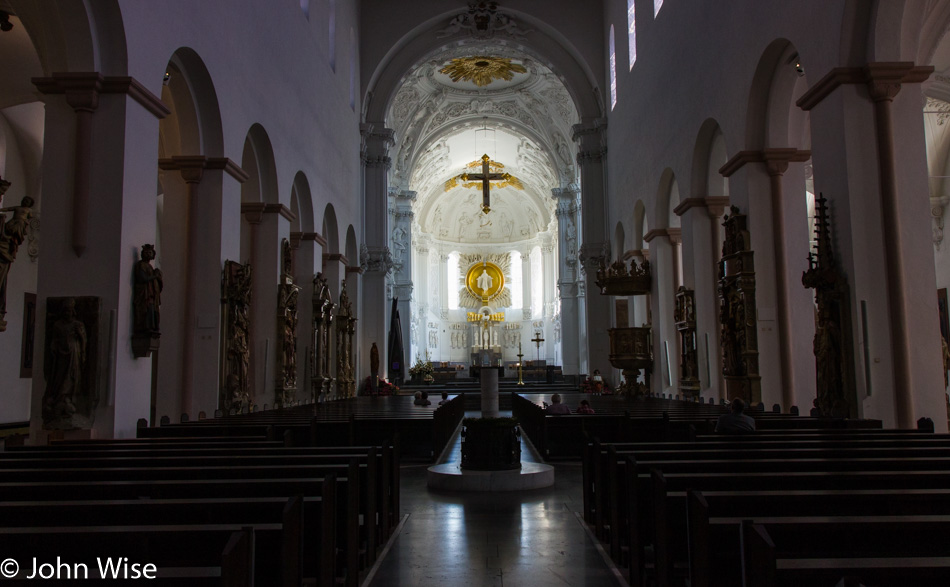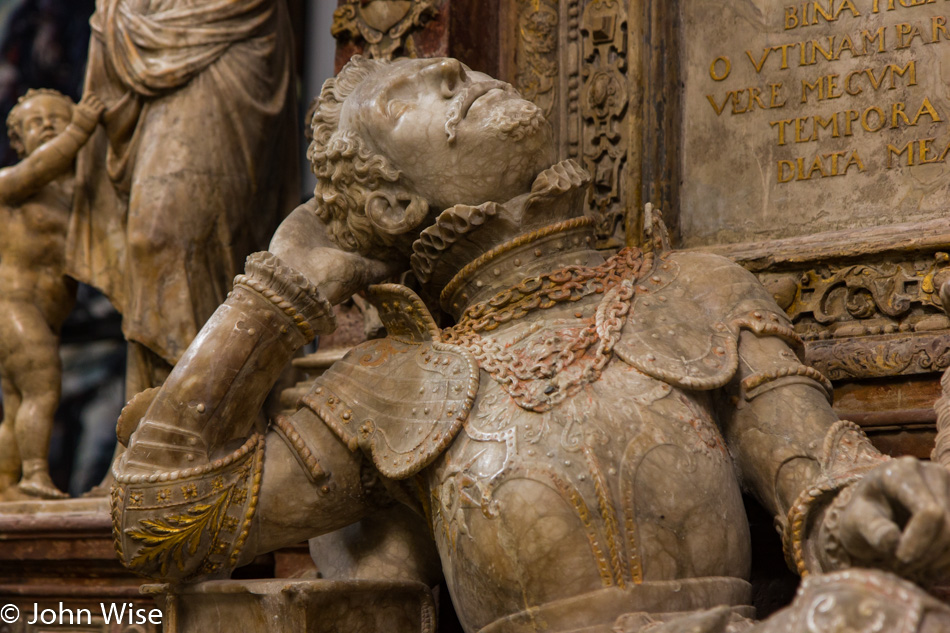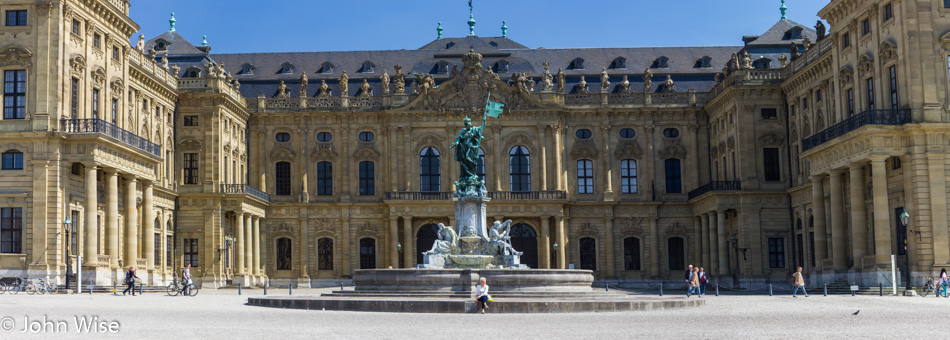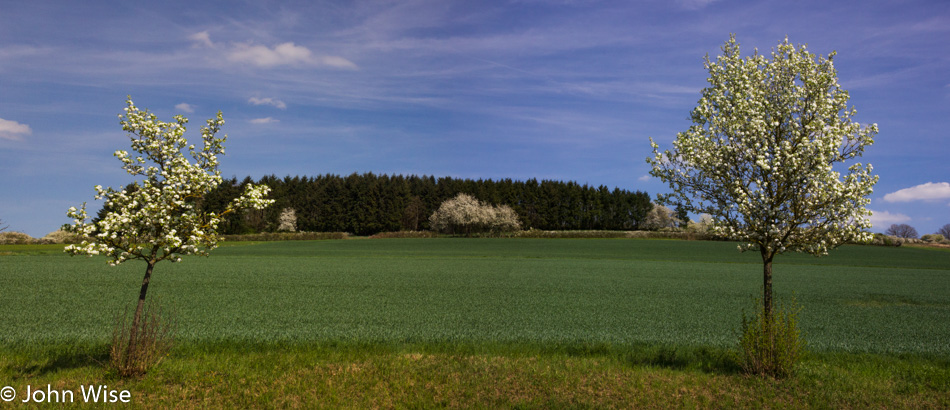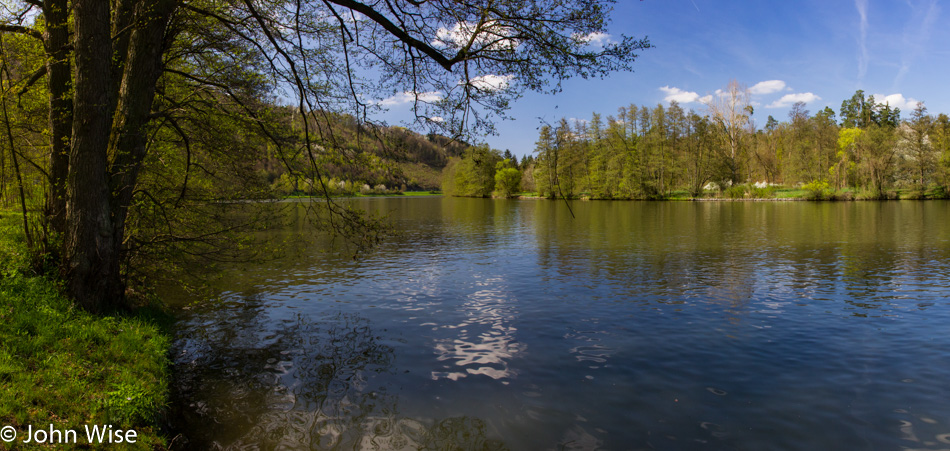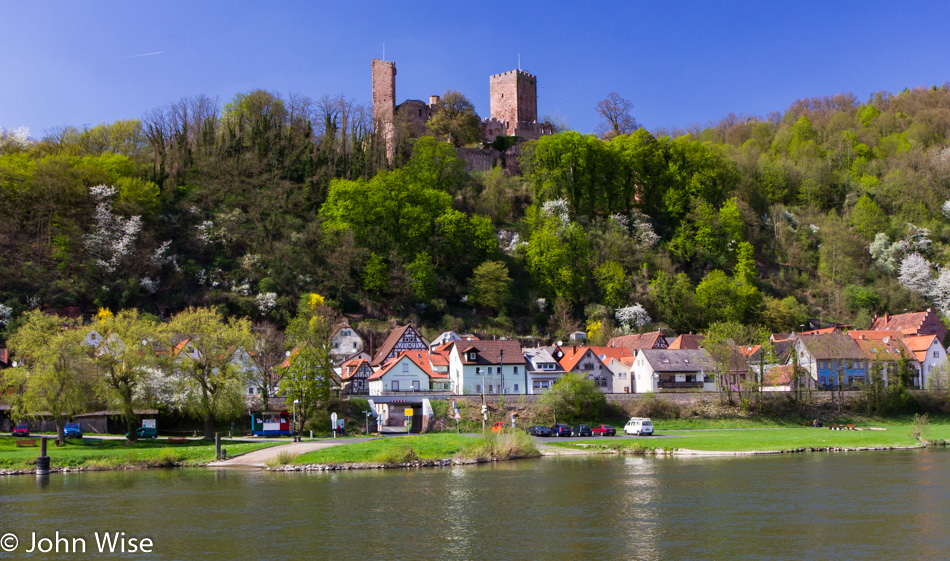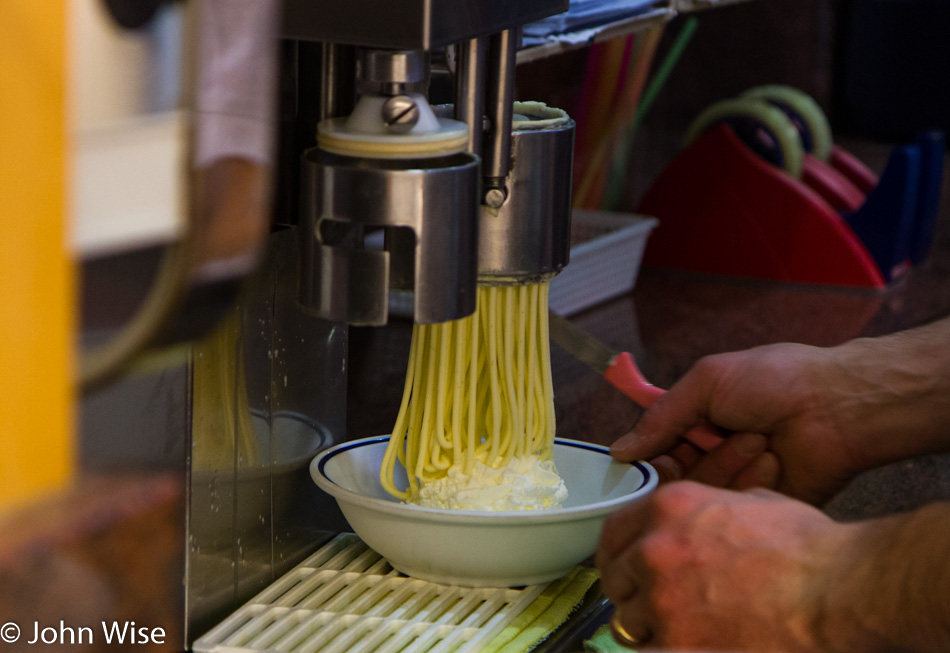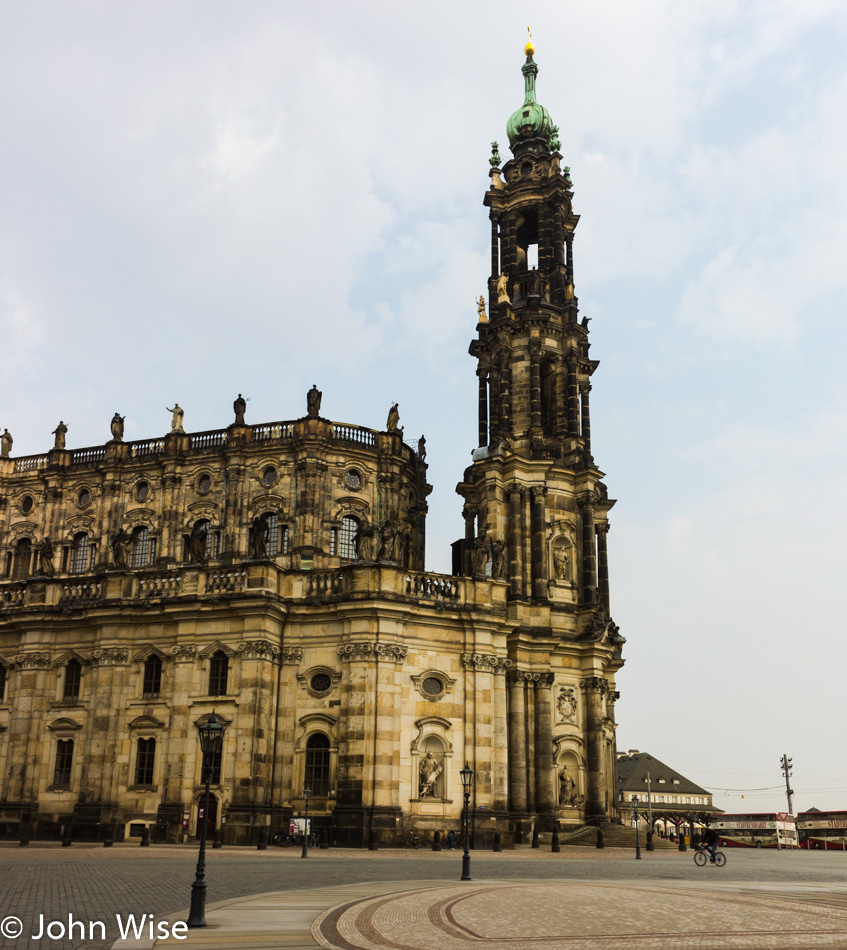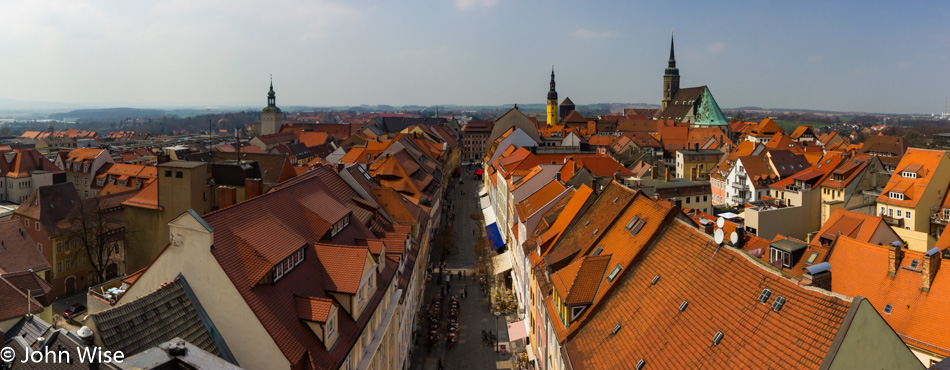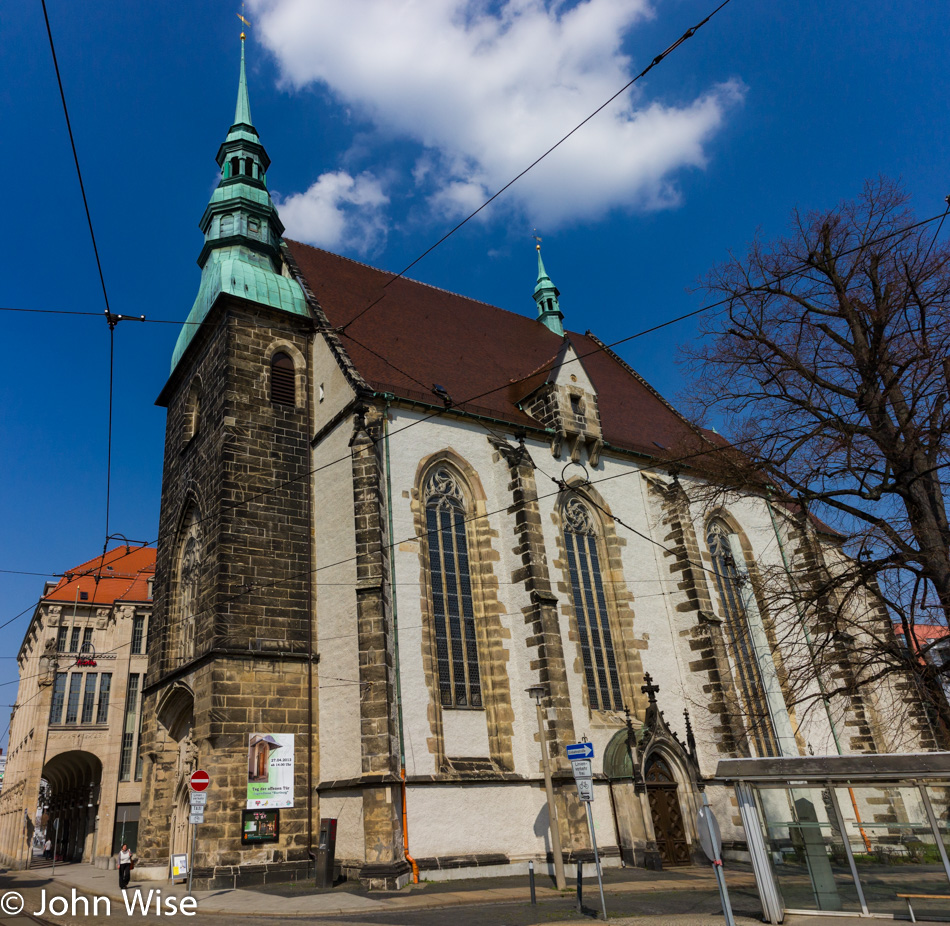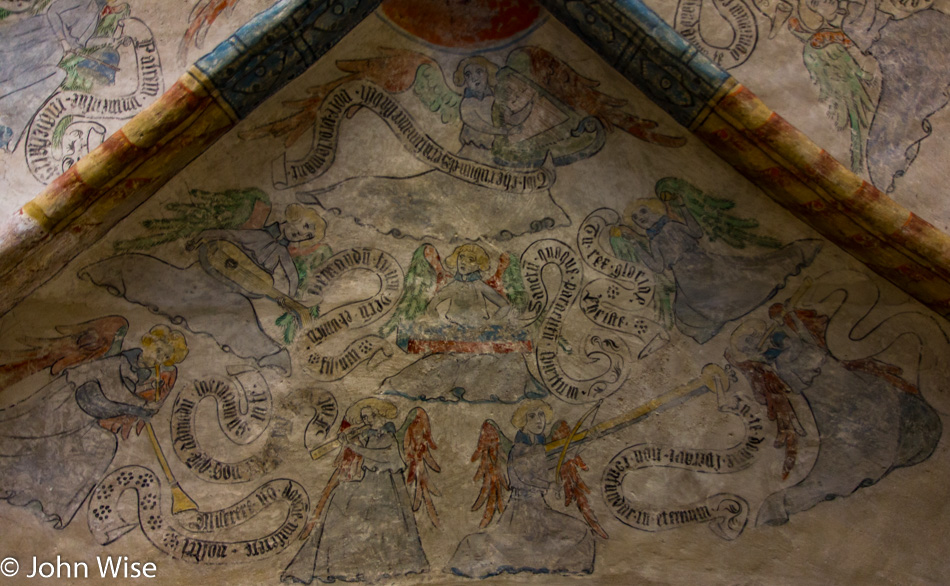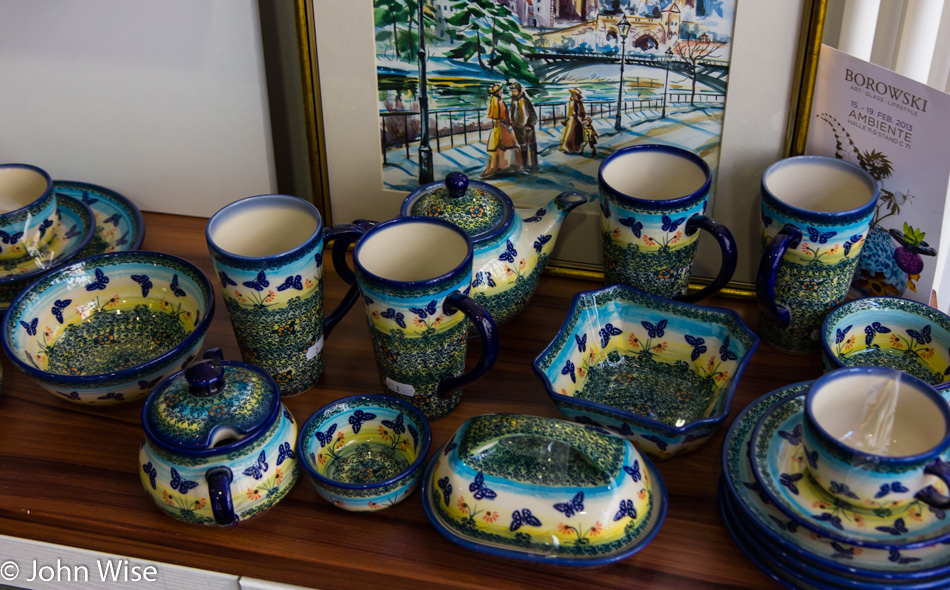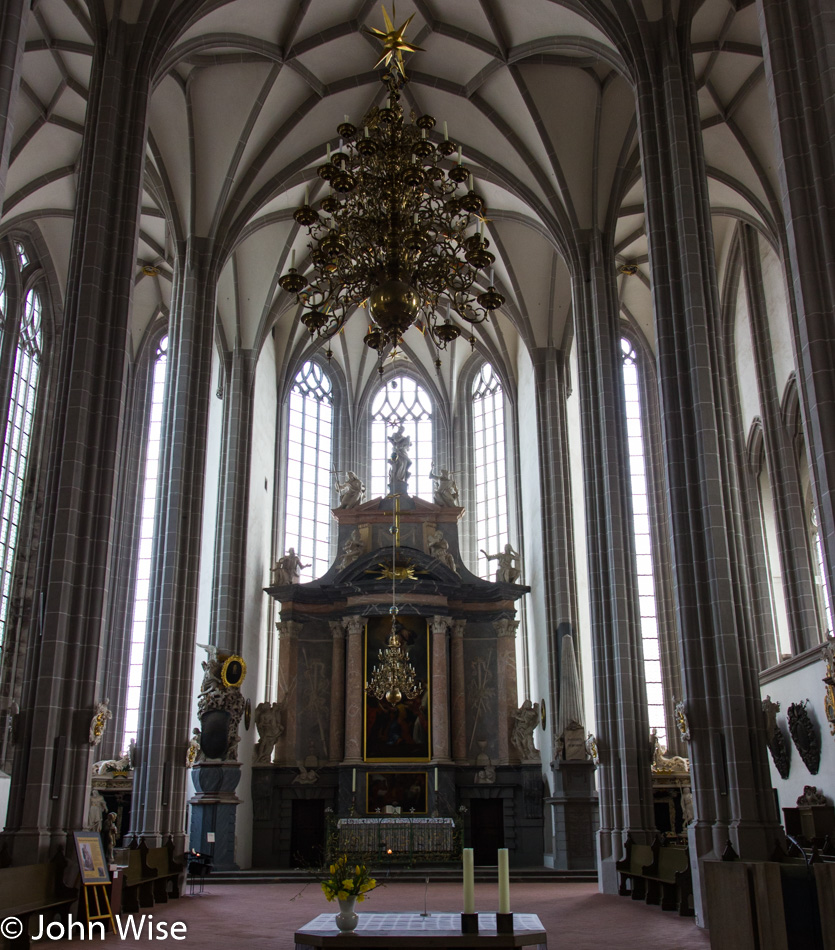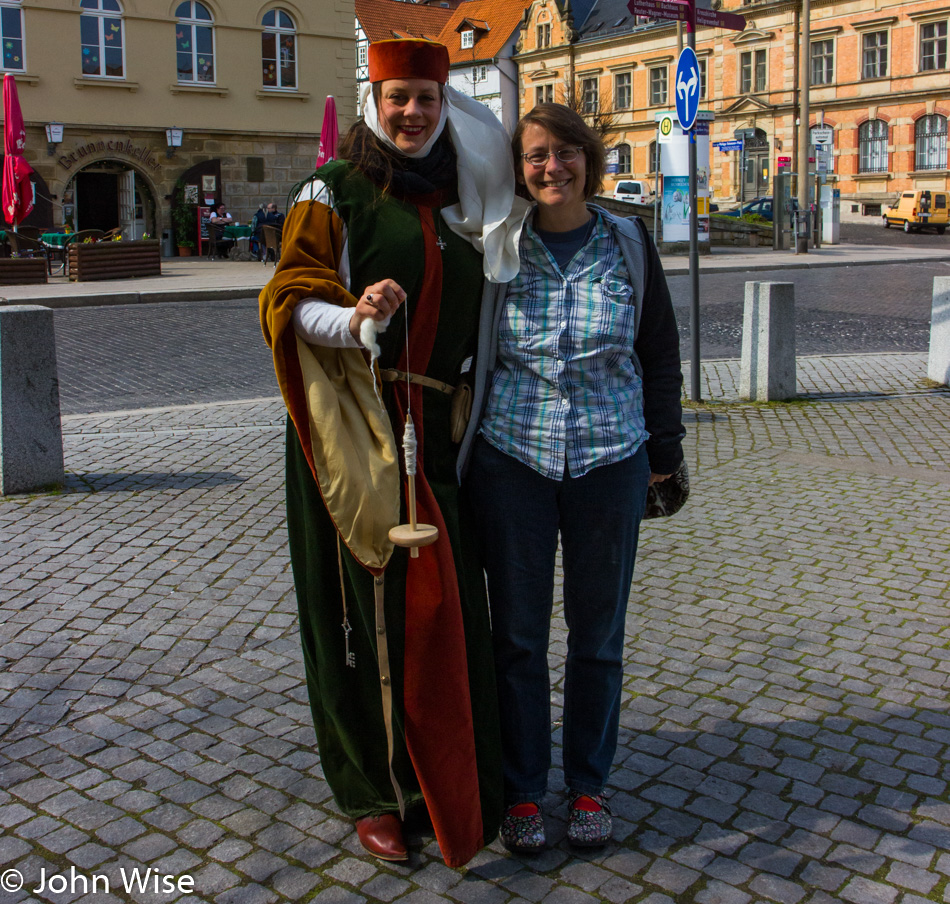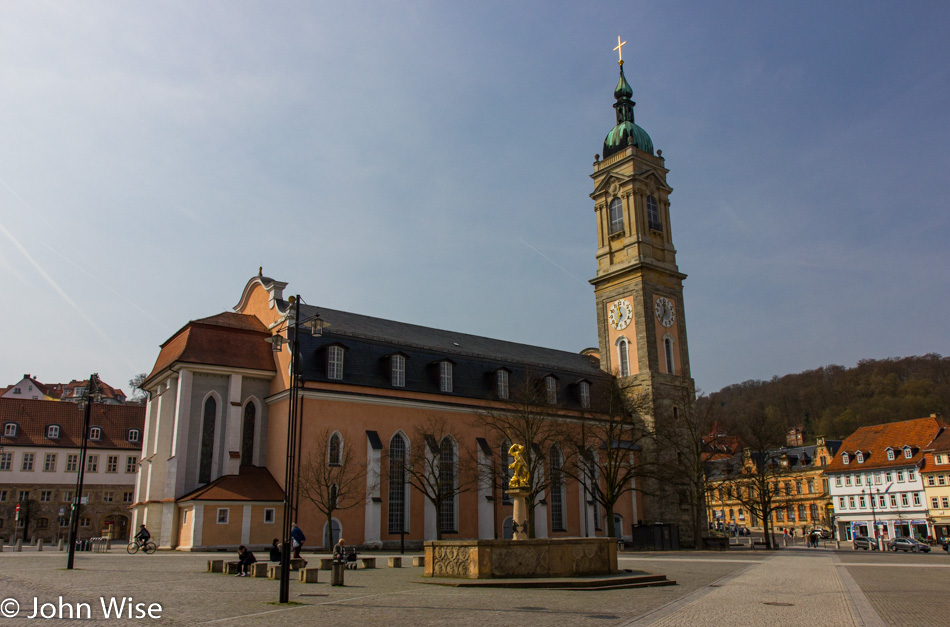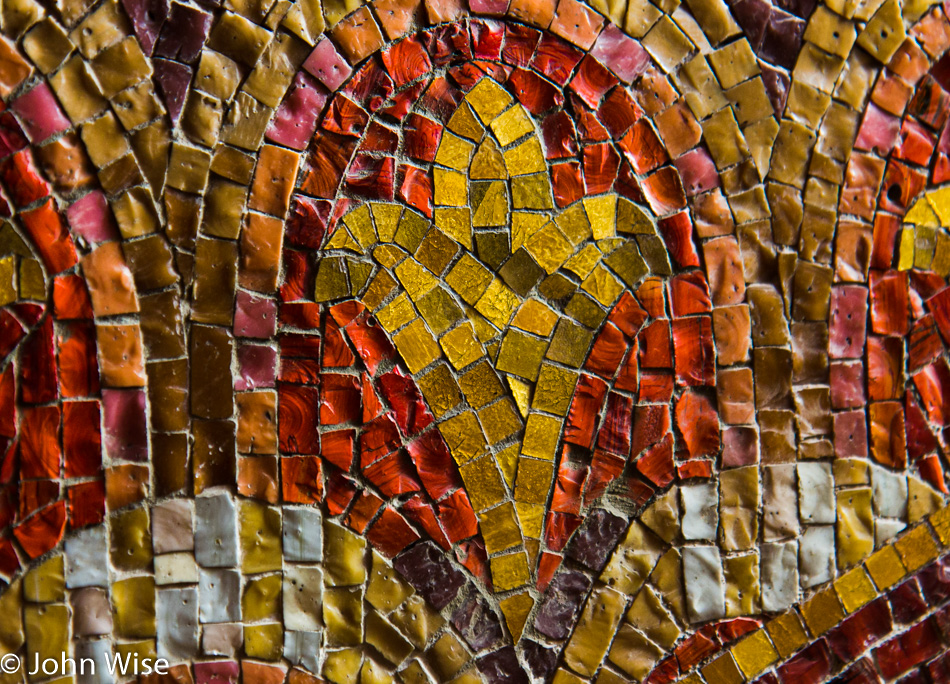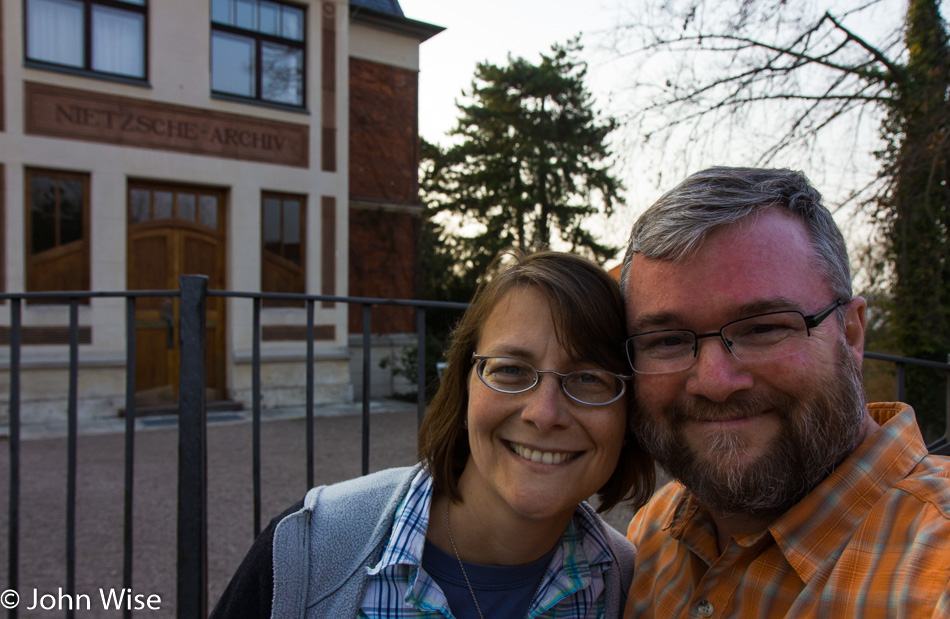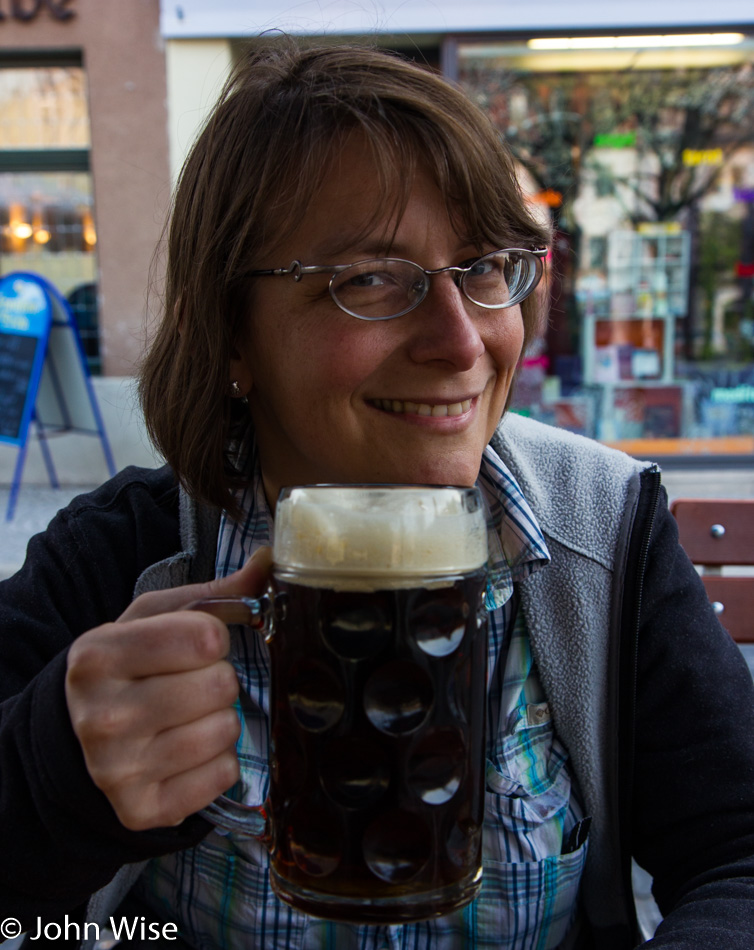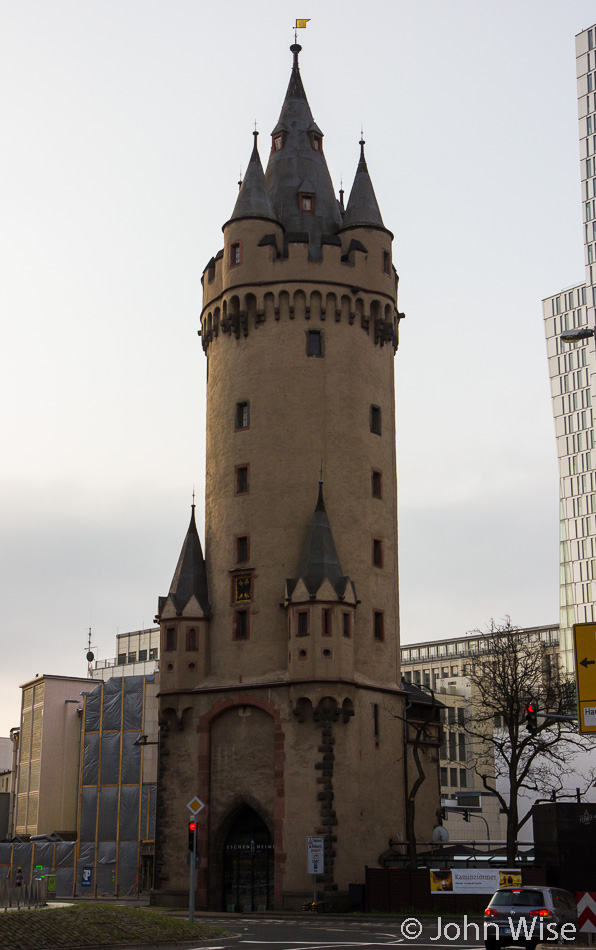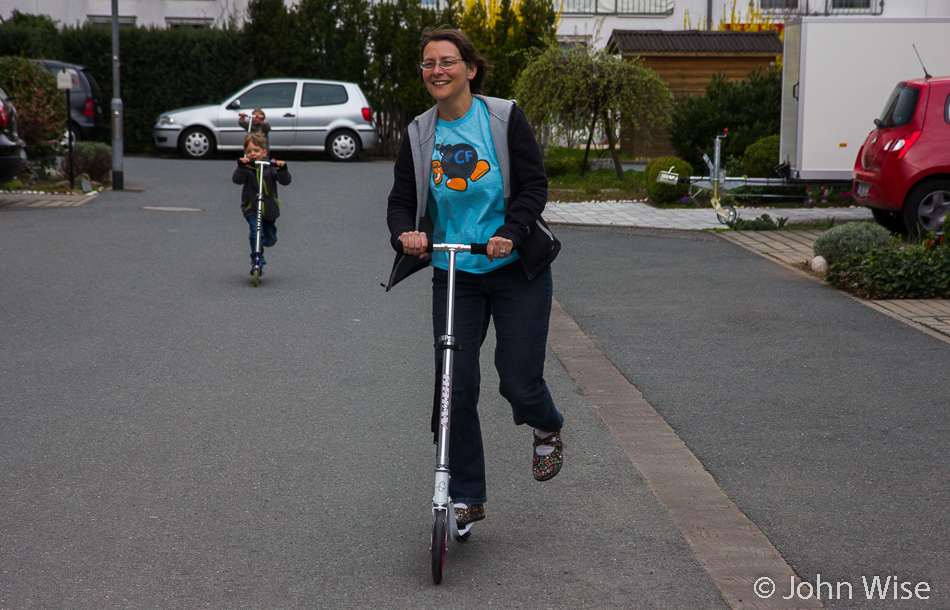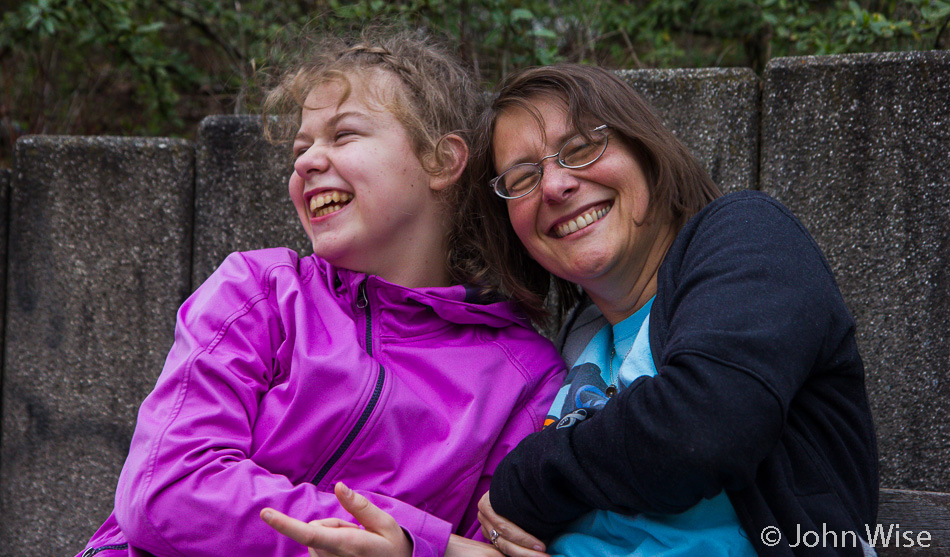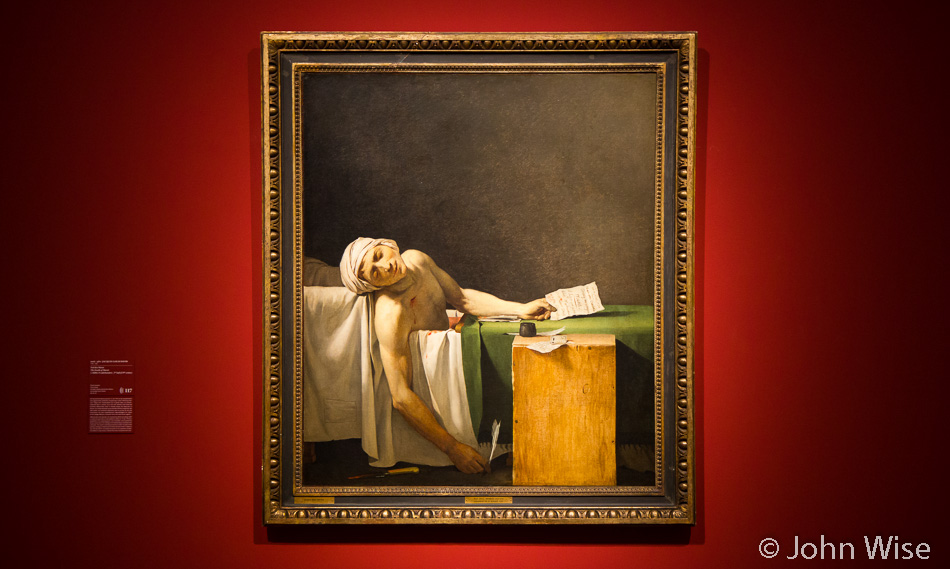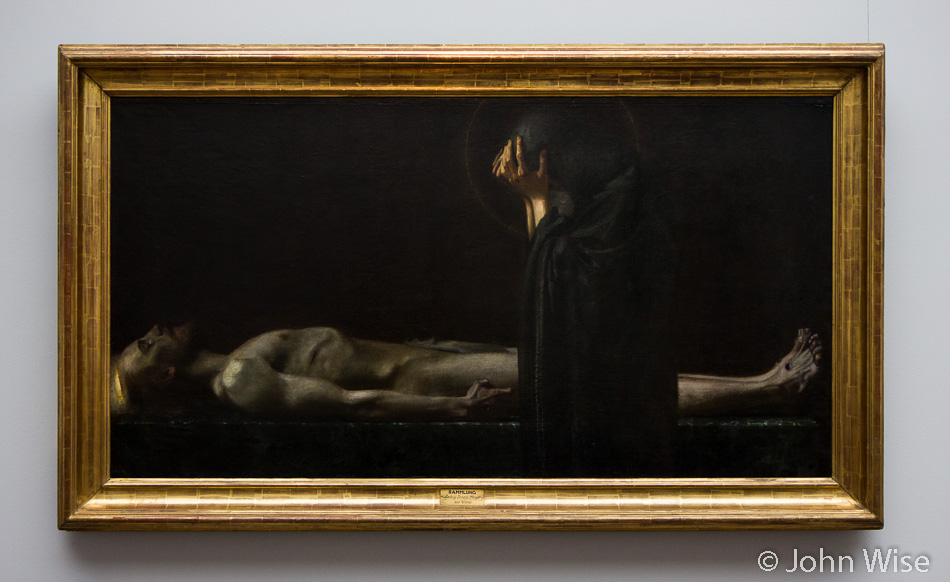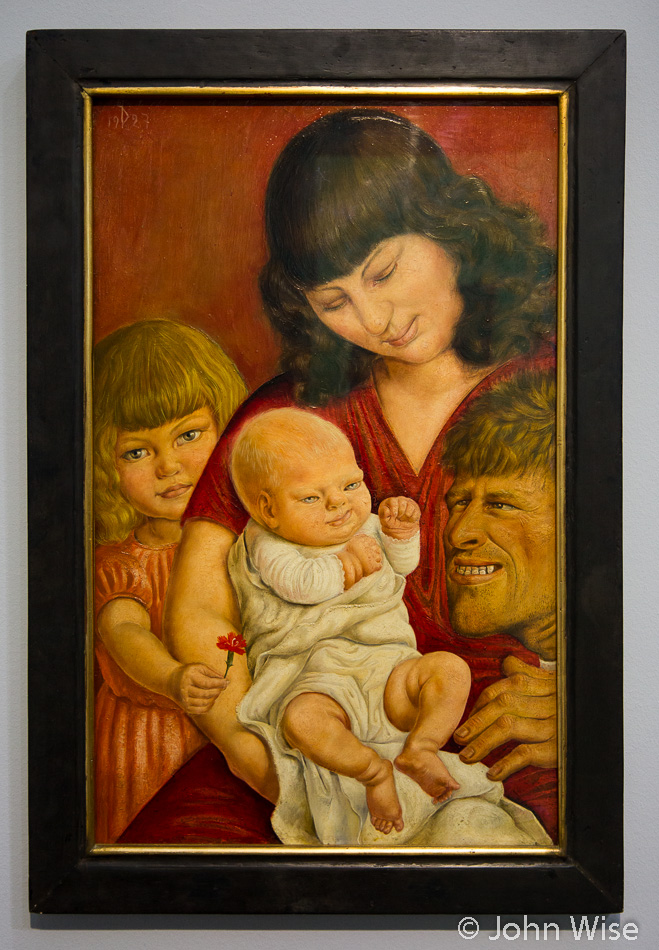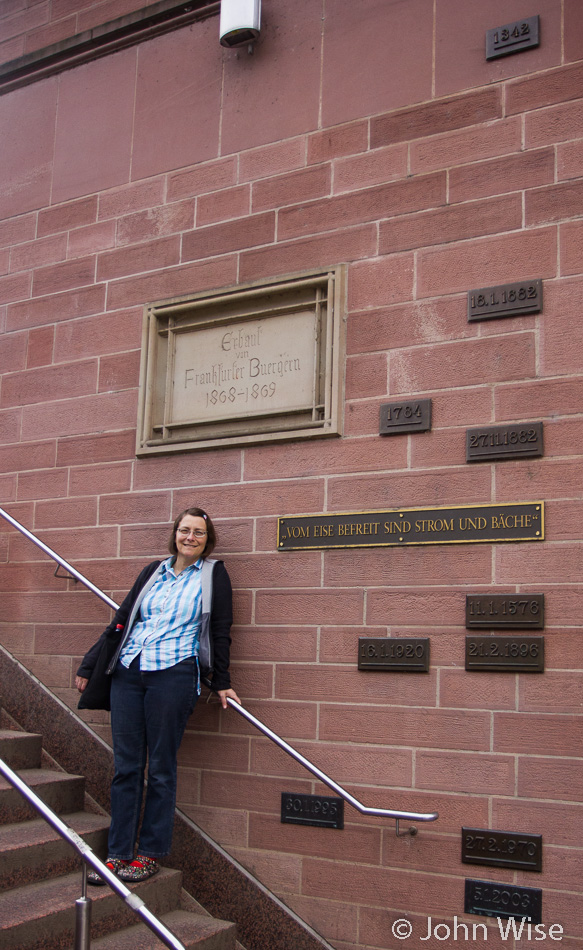
First things first, my blog is not necessarily one for public consumption. As the name was originally intended, a blog is a Web + Log, and a log is a written record of events. This day’s entry is heavy on photos and light on content; it is more of a visual record of filling in gaps that will allow Caroline and me to bring more of Frankfurt home with us. With only five days remaining on our visit to Germany, panic starts to set in as we wonder if we’ve seen it all. Up early and off into the city, we got on the U-Bahn, exiting at Holzhausen Strasse.
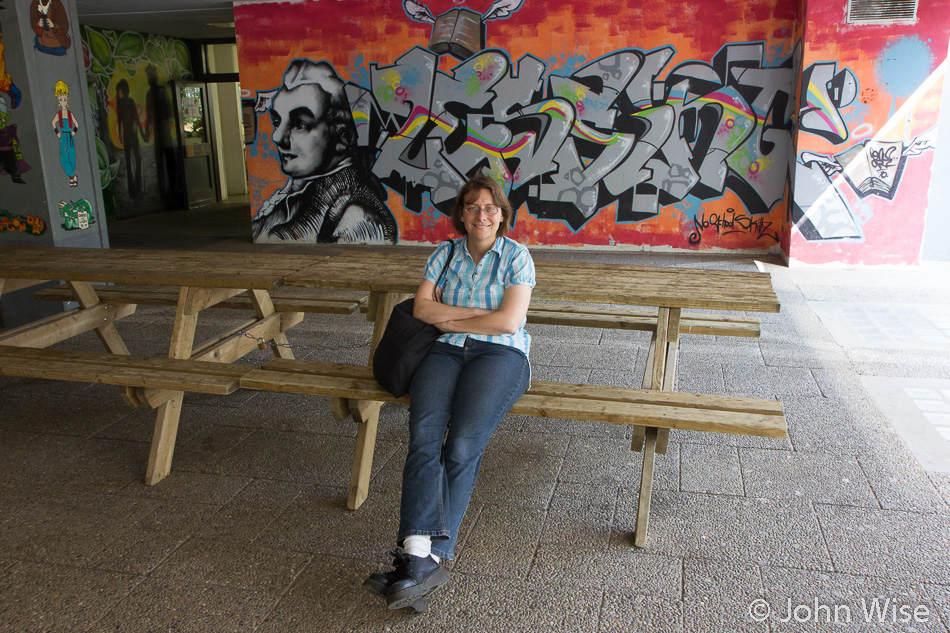
We stopped here first because this was Caroline’s neighborhood while she was growing up. Unlike schools in America, there isn’t fear “yet” for the lives of children from predators that make them vulnerable while trying to attain an education. We walked right onto campus, where my wife attended gymnasium, the American equivalent of high school. Not only did we stroll the school grounds, we even went into one of the buildings where Caroline went to classes. I have to admit that this felt alien, that any moment someone would challenge us, asking what we were doing here. That didn’t happen even though administrators and students alike took notice of us more than a few times. Feels nice being in a civil society where people are still treated like mature, responsible adults. Like I said in the previous paragraph, this is my weblog, my place for social commentary, should I decide to share it.

Down the street to another corner that had big importance to a young Caroline’s life: Reuterweg and Hansa Allee. At this intersection is a building of some historic importance.
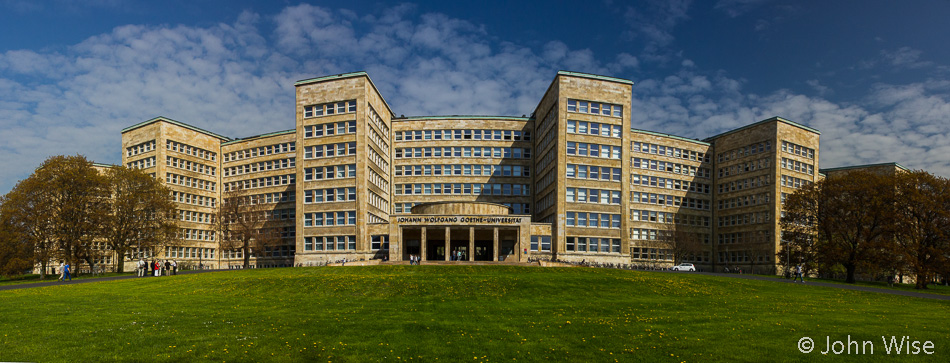
At one time, this was the IG Farben Research Headquarters that was responsible for Zyklon B, the gas used for killing people in concentration camps during World War II. After the war, it became the central headquarters for the Supreme Allied Command and was ultimately renamed the Abrams Complex. Following the end of the Cold War and the winding down of the U.S. presence in central Europe, this valuable corner of land was turned over to the state. Today, it is the Johann Wolfgang Goethe University. The lands around the building acted as a shortcut for kids passing through the area back when Caroline went to school up the road, but she’d never been in the building.

Today, we both get to visit this place. I first visited almost 30 years ago while I was still in the military. Back then, there was a helicopter landing site on the grounds and lots of armed soldiers. General Colin Powell was in charge here. Across the street was the Frankfurt PX, or post exchange, effectively the Army’s version of Target or Kmart. Those buildings where I could take Caroline to the fast food places that were part of the PX area are now all gone, replaced by the central headquarters of the Frankfurt police. From the sordid past of IG Farben to today’s function as an institute of higher learning, there couldn’t have been a better re-purposing of this historic set of buildings.

One of the unique features of this building is the usage of “paternoster” elevators. Holding only one person at a time, this constantly moving elevator is a bit peculiar to use the first time. We rode them up and down more than a few times during our visit.
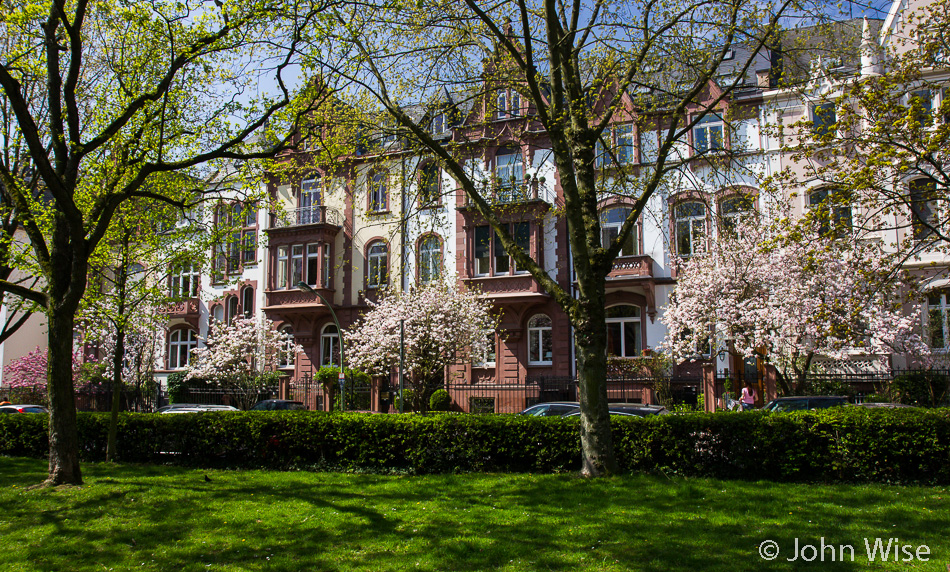
Around the corner, we turned right and right again to walk the park-like area along Eysseneckstrasse on the way to Holzhausen Park. At one time, according to an old painting, this area was far out of town. The painting depicts the Holzhausen residence as being away in the countryside; today, it is nearly in the middle of Frankfurt. On the day we visited the Städel Art Museum, we were introduced to the Holzhausen family. Many of the streets around this park are named after their family members.

Just before entering the park is this old kiosk Caroline used to shop at. Today was no different from back then; she stopped for a Caretta, an orange-flavored Popsicle.
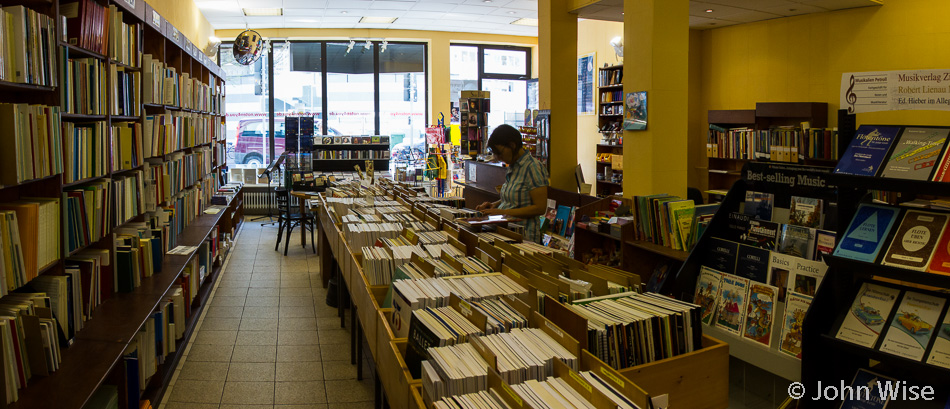
On Oederweg, we had a mission to find a sheet music store, Musikalien Petroll (pronounced moosic-kallee-in). Caroline is looking for old European folk music, stuff from the Middle Ages. She’s looking forward to hammering out the tunes on her ukelele when we get home next week.
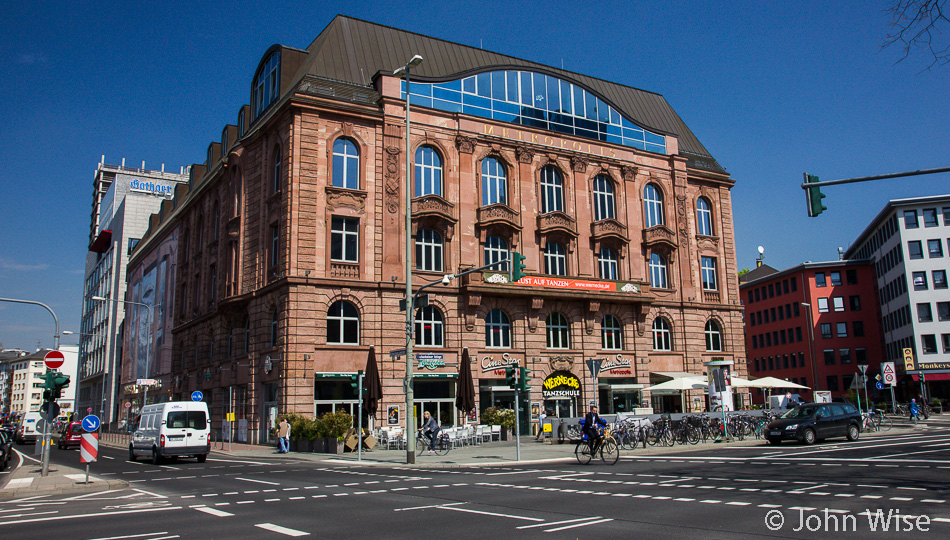
This corner building used to be known as the Volksbildungsheim, a concert hall. Today, it is a movie theater. Back in January 1989, I was attending a concert when a young German woman introduced herself as an acquaintance of Michael Mayer, a mutual friend. He had told her to say hi as he knew she spoke English and also had an interest in photography and possibly video. I was filming the bands that were playing at “Vobi” that night. She said her name was Caroline. We talked briefly until Michael returned and then parted ways. Over the ensuing months, we would run into one another at various concerts throughout Frankfurt. It wasn’t until one night in June at the Batschkapp (another concert hall) following a show by The Pixies that we ever really talked. Sitting on the steps to the overpass of the train, we talked for so long that Caroline needed a ride home. The rest, as they say, is history.

Time for breakfast. We’ve been busy with these other things, so maybe I should call it lunch. At 1:00, we finally stopped for a pause here at Hauptwache Cafe. This was the first place I ever ate real German apple strudel, and the memory of it has always stayed with me. Caroline, on the other hand, has no recollection of ever having eaten at this historic location. We shared a bowl of white asparagus soup, a plate of steamed white asparagus with boiled potatoes, and hollandaise. For dessert, it was, of course, a portion of apple strudel with vanilla sauce. Yes, it was as good as my memory said it was.
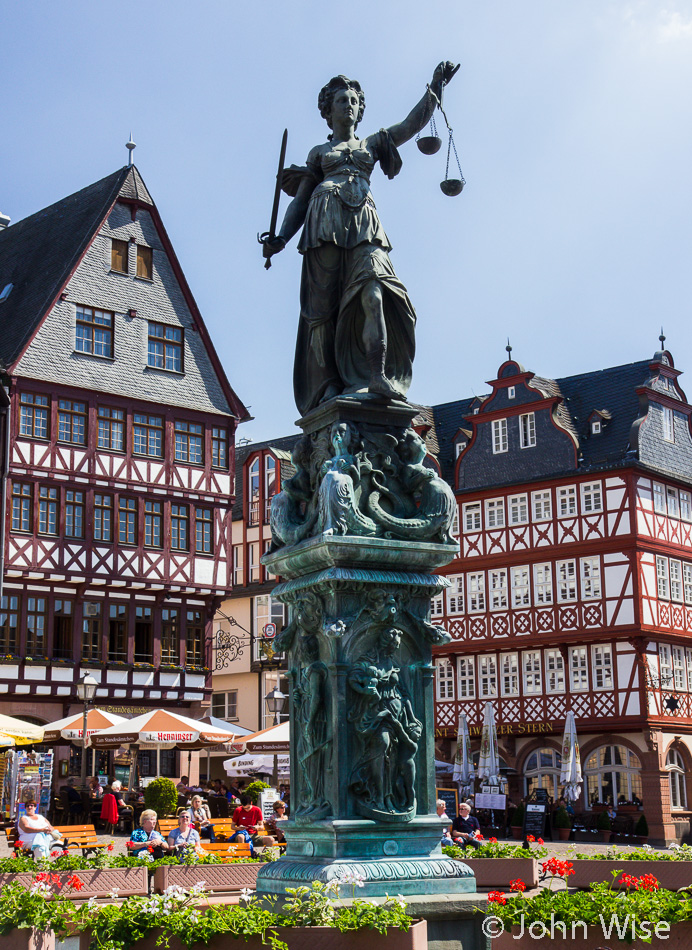
Our next destination is the Frankfurt Dom, we call them cathedrals in the States. On the way, we pass through Römer. While I have posted another photo of the Römer (City Hall), it was a gray, cold day a few weeks ago, so here are a few new images I shot today that put the area in a better light.


During the Christmas holidays, the Römer plays host to the Weinachtsmarkt or Christmas Market. I have fond memories of being here on cold nights sipping glühwein (the literal translation is “glow wine”), a spiced hot wine that is perfect for the winter season. Next stop, Dom.

We didn’t approach the Dom from the front entrance, good thing, too, as on the backside was a small hut where a woman was selling tickets to ascend the over 300 steps to a platform almost 20 stories above the city for this spectacular view. It’s dizzying in the narrow stairwell and cold, too, on the other hand, I’d imagine it is stifling hot and humid during the summer. As you can see, we couldn’t have asked for a better day to be up here. We were in awe.
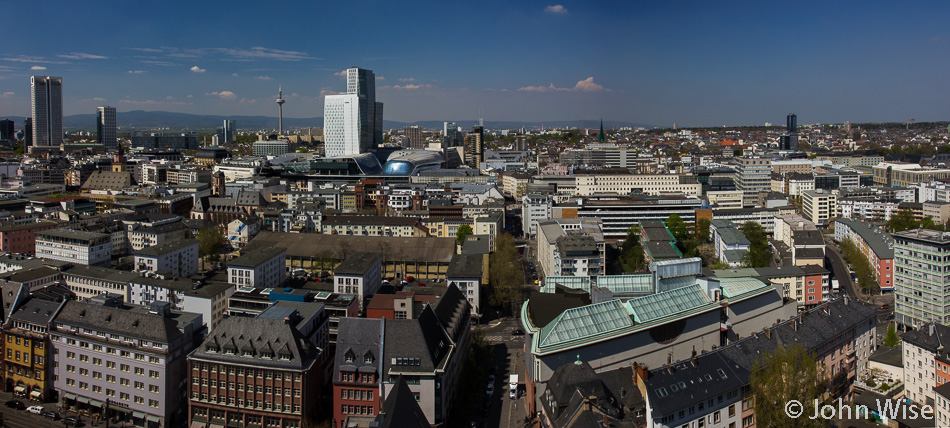
The funny thing is, neither Caroline nor I had ever been up here. I don’t think many others trudge up the 195 feet (65 meters), either. The signage in front of the Dom was non-existent, hence my feeling that it was good that we came around the corner we had. The previous view was looking southwest; this view is looking north. It only cost us €3 each for the climb, I can’t recommend it enough.

Back down on the ground, we took a peek at the inside of the Dom (remember, it’s a Cathedral). Sorry to sound jaded, but after the Dom’s of Prague, Dresden, and Lubeck the Frankfurt Dom pales in comparison. From this point on, for the next couple of hours, I went one way, Caroline the other.

While she headed towards her mom’s apartment to sort through some things that were coming back to Arizona with us, I went to the red-light district. You read that right, I wanted to visit the whore houses. Way back when, while still in the Army, another young soldier, a Puerto Rican guy named Rosario in fact who was my sponsor and whose job it was to introduce me to the places I needed to know about and classes I had to take, such as basic German and customs of our host country, asked if I knew about the legal red-light districts. I did not, and so he rectified that as part of my familiarization with the Frankfurt area.
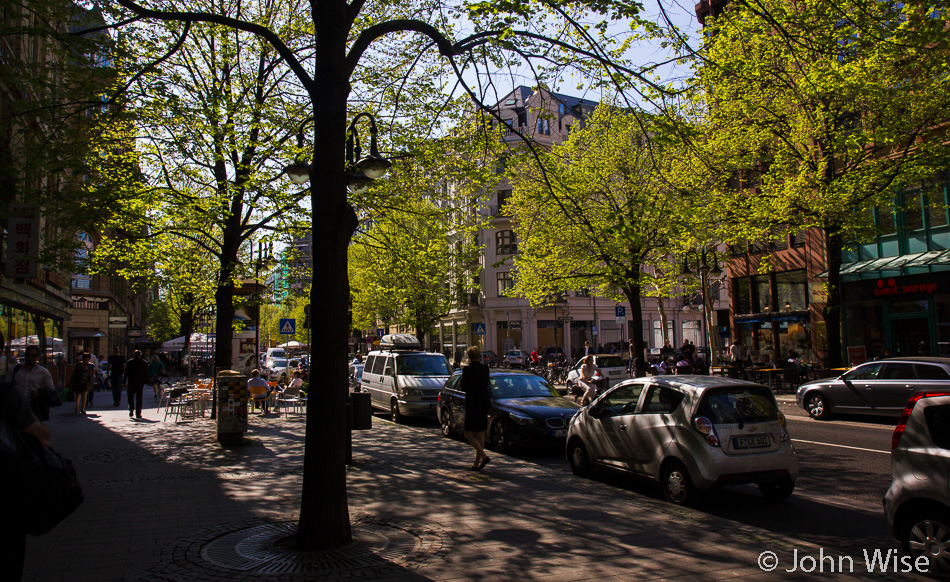
Now, over 25 years since my first walk down Kaiserstrasse and its side streets that lead into debauchery and Catholic guilt, I’m here for a reminder and nothing else, probably. The area is seedier than it ever was, or I’m more normal than I had been. The men who are part of the subculture, likely part of pimping and other exploitation, are now mostly people from other countries. Back in my day, there were many German thugs who were a part of the scenery; today, it is gangsters who simply appear to be some very bad people from other lands. Most of the houses used for prostitution have closed as the area is slowly gentrifying; what is left are but a half dozen buildings. Years ago, most of the women on the ground and first floor (Germany refers to the 1st floor as the ground and the next level up is the 1st, what we call the 2nd floor in America) were central Europeans. Today, the first floors have no central European girls working there; they are all from Turkey, the Middle East, the Philippines, and Africa. Those European girls could be ultra-babes working tricks; today, these women span the age and weight gamut. The worst part of it all is the reminder of the smells: cigarette smoke, incense, sweat, cheap perfume, and stale semen.
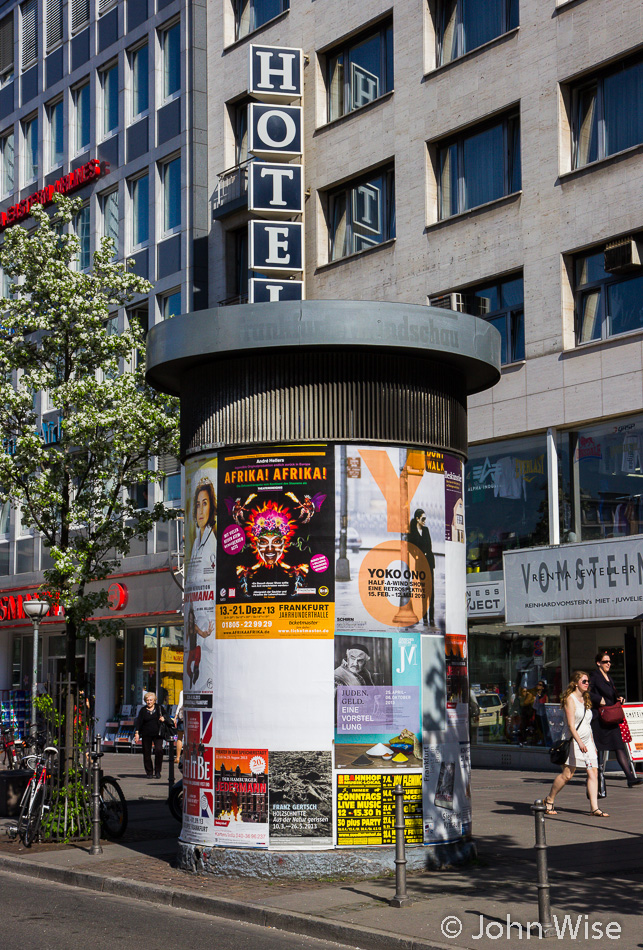
Twenty minutes in the red light district was enough, but maybe not for what you might be thinking. I’m heading back to Konstablerwache to catch the train that will take me back to Jutta’s apartment, and the wife, who is waiting for me, wondering what I’ve been up to. As I have been doing the entire time we’ve been in Germany, I’m looking for small details that will allow us to revisit the place once we are back in the intransigent desert we call home for some strange reason or other. Above is a Litfasssäule (Litfass Column named after its inventor, Ernst Litfass).
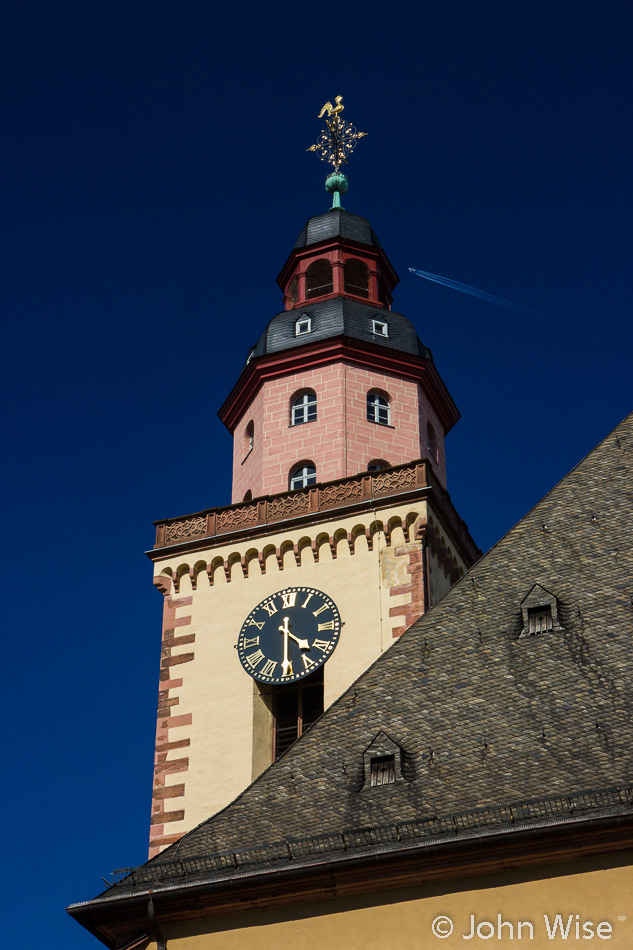
Around the corner is Katharinenkirche (St. Katherine’s Church) which is also on Hauptwache adjacent to Hauptwache Cafe that we’d eaten at hours earlier. For ten years, I lived in Frankfurt, and not once did I enter this church; today is the day I finally stepped inside.

To my surprise, the organ is being played as I walk in. Quietly I take a seat and enjoy the music filling the church just as everyone else who is here taking a 30-minute break from the noise and crowds that line Zeil (shopping street) that runs from Hauptwache to Konstablerwache. After a few pieces, I need to take off to catch up with Caroline.

Along the way, there’s always one of these stories of me being delayed when I’m out wandering around; I spot something else that needs photographing. On the other days we’d been on Zeil, it was cold and drab, but with today’s weather, this alien portal built into the mall summoned me to take its picture. Stand here long enough, and you, too, might see someone sucked through to be delivered to another dimension in a parallel universe.
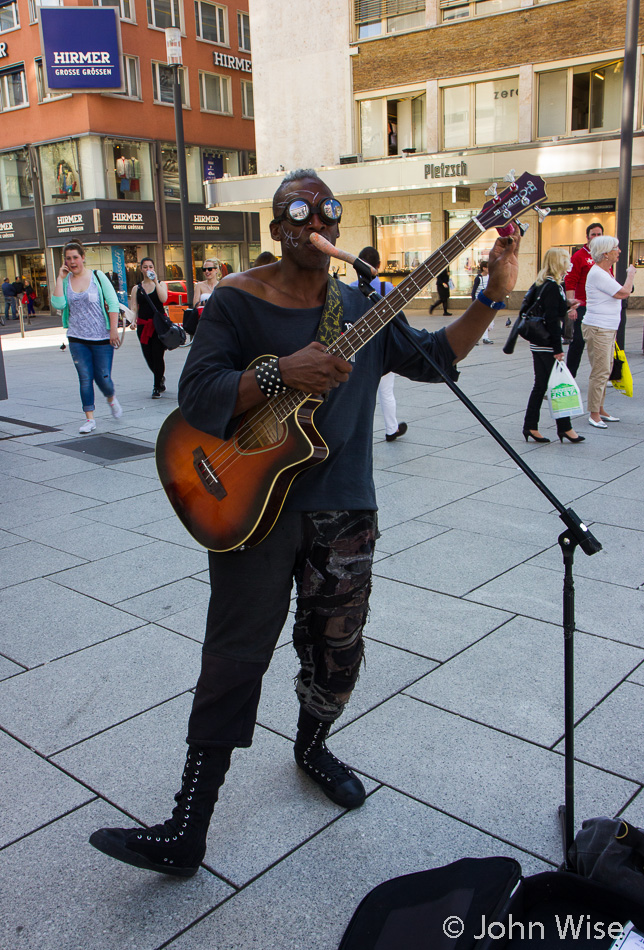
Meet Phoenix, The Devourer. This guy hailing from the Bahamas, not Phoenix, Arizona, is busking on Zeil. That’s a carrot and not a very fresh one that he’s singing into, probably the same one we saw him working a couple of weeks ago when we first saw him near Hauptwache. I threw him a few euros for his friendly efforts, which were directed more towards the cute women who were strolling by, but that’s okay as I wasn’t looking for anyone to hit on me anyway. After dropping the coins, he said, “Thanks,” so I answered him back in English and told him he was welcome. He must not hear a lot of his mother tongue over here these days and started up a short conversation. We talked about music, busking, and living in Frankfurt. I told him how much I appreciate this aspect of high foot traffic areas in Europe where musicians pick a corner and serenade us with their skills if they actually have any.

Need something to do on a beautiful sunny afternoon, especially on Friday? Try one of the many wine fests. This small affair was occurring at Konstablerwache in the midst of the open-air market. Slipping through the crowds wasn’t easy, but finding great cheese, fruit, and hot food was. And I thought Frankfurt was kind of boring when I lived here 18 years ago.

Underground in the subway stations are these boards reserved for event advertising. From urban gardening and plays to music and talks, the posters bring our attention to the wealth of amazing events that are happening year-round in Frankfurt. So why are we living in Phoenix again?

This is the subway station at Bornheim Mitte. Each of the stations is different; this one has obviously not been renovated in many years, but others have changed dramatically since we last passed through them. By now, I’m just around the corner from buzzing Jutta’s door for Caroline to let me in.
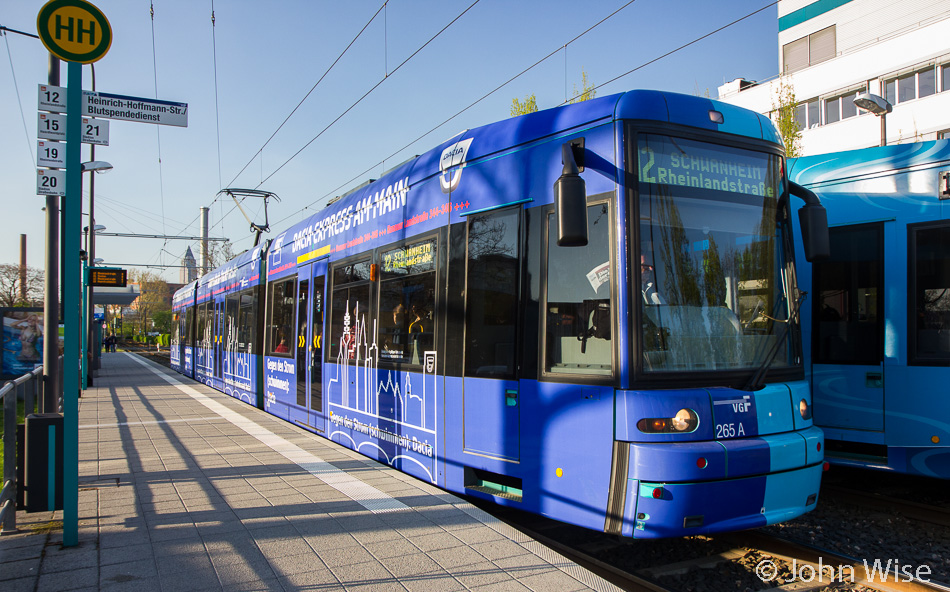
Since Jutta left the hospital, we’ve been visiting her just across the street from where she worked at Blutspendedienst (blood donor service) for more than 20 years. Streetcar number 12 is the train we’ve been taking to get to this stop at Heinrich-Hoffmanstrasse. Jutta is still in rehabilitation but looks to be going home on the same day we are going home. For the next two hours, we hang out before hunger pangs tell us to go eat.
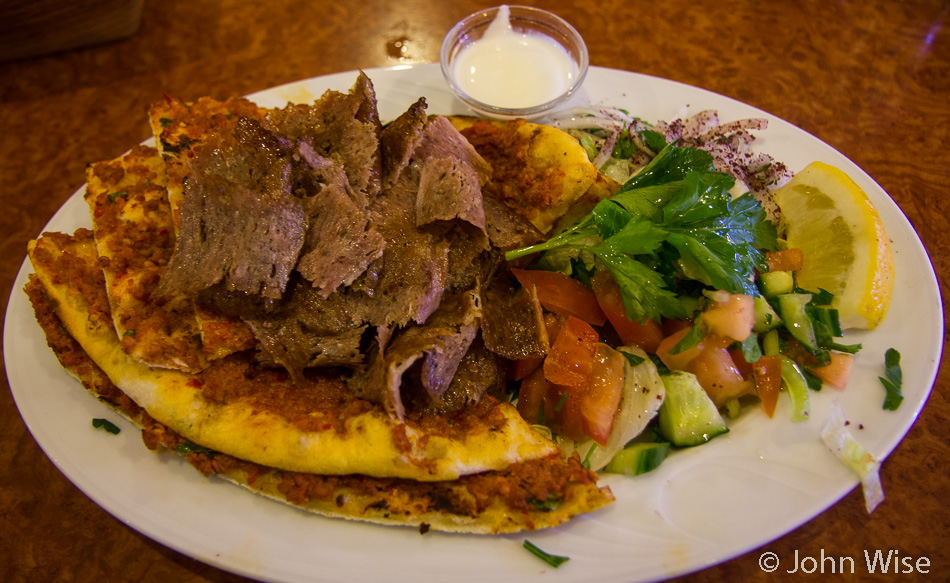
Dinner was near the Bahnhof at Markez Kebab House. On other days when we’d be walking by this corner restaurant, it was the one place that was packed at lunchtime, so tonight, it was our turn to find out what made it so popular. The crowds are well deserved. We shared two plates, one with döner (gyros) and Turkish pizza, while the other plate, called Markez Döner, was a combo of another type of kebab served with rice and fries. Both dishes were great and left us wondering why real Turkish food is absent in America.
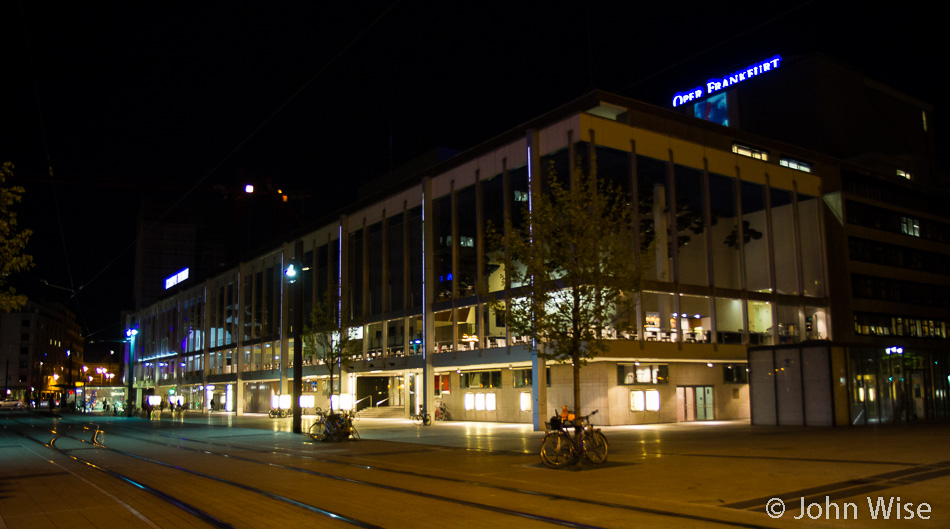
With the day nearly over it was time to board the U-Bahn for a ride back out to the Engelhardt’s. From the main train station, it is just a few minutes walk to Willy-Brandt Platz (formerly Theater Platz), where we go underground to get our short subway ride out towards Heddenheim.








